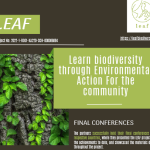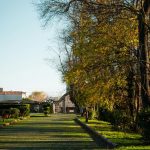The waters of the Danube, which flow into the Black Sea, form the largest and best preserved of Europe’s deltas. The Danube delta hosts over 300 species of birds as well as 45 freshwater fish species in its numerous lakes and marshes.
Birds from six of the world’s major ecoregions, including the Mongolian, Arctic, and Siberian, are drawn to the Danube Delta. Some 320 bird species—166 of which are migratory and 159 of which are species that lay their eggs—can be found in the delta throughout the summer. Swans, wild ducks, coots, and other species totaling over a million winter here. Plankton, worms, mollusks, grubs, sponges, and a variety of fish species, including carp, pike, pike perch, sheatfish, and freshwater sturgeons, are abundant in this ecosystem.
Danube Delta is renowned for its diversity and abundant bird population, some of which are extremely uncommon. The pygmy cormorant, purple heron, tufted duck, red-crested pochard, mallard, greylag geese, great white egret, small egret, eurasian spoonbill, great white pelican, dalmatian pelican, mute swan, and glossy ibis are among the most significant.
The vast willow tree groves that once covered the hard terrain of the delta have been nearly completely removed and replaced with Canadian poplars. Little groves of willow trees (Salix alba, Salix fragilis, Salix purpurea, Salix pentandra, Salix triandra, etc.) combined with white poplar can still be found on the river banks that have been left in their natural state (Populus alba). On occasion, the willow trees along the Danube’s arms and larger channels form passageways. Mixed woods of oak (Quercus robur, Quercus pedunculiflora), other trees (Fraxinus pallisiae, Ulmus foliaceae, Populus tremula), and shrubs can be found on the levees of Letea and Caraorman (Prunus spinosa, Crataegus monogyna, Rosa canina, Berberis vulgaris etc.).
Moreover, sand dunes are home to vines (Vitis sylvestris, Hedera helix, Humulus lupulus, and Periploca graeca, which can grow up to 25 meters in length). Particularly in the depressions between the sand dunes on the Letea levee, these strange-looking forests known as hasmace grow. The meadow viper, osprey, Eurasian eagle owl, and other animals make up this area’s fauna.
#leafbiodiversity
#biodiversity
#leafproject
#ErasmusPlus
#teachereducation
#diversity
Mention us every time you have the opportunity to show that biodiversity counts for you!
#energies2050
#dlearn
#MihaiEminescu
#platonschools
#LinkGroup
#udrugaroditeljakorakpokorak






